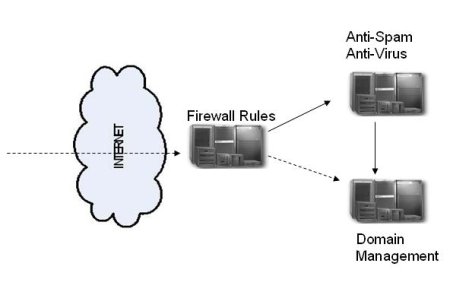A multi-stage approach to securing your email communication
When speaking of mail server-related security, one tends to limit the issue to message applied security measures, and even more to Antivirus and Antispam protection. This is however only one stage in the more complex process of securing your server. This article aims at identifying and explaining all security layers, highly important when choosing a certain mail server and consequently when configuring and using it.
1. Securing mail server connections
When using a newly installed mail server, administrators should first make sure they use secure connections. There are two main possibilities to secure connections: encryption and firewall-like rules.
Encoding methods have continuously been developed as the Internet has become the preferred medium for data transfers. The most commonly used encryption methods are SSL (Secure Sockets Layer) and TLS (Transport Layer Security). However, incorrect usage of encryption often leads to security breaches. Most common examples are web pages containing both secured and unsecured information or communications secured only after login via a plain login page.
2. Securing mail server protocols
After securing the first stage of an email transfer, the next action to take would be securing protocols.
The recommended steps are to use multiple listeners for each interface and correlate them with certain allow and deny rules. Also, limiting the number of connection and authentication errors, the maximum number of commands or setting a time-out for your sessions can help protect your server from further DOS attacks.
To further enhance protocol security, we recommend client control rules, based on the sender or receiver address and certain limitations regarding the number and size of email messages.
Authentication is also highly important at protocol level. By implementing several authentication methods, either simple (plain, login, CRAM-MD5), or complex (GSSAPI, Kerberos), the mail server enhances communication security and is better equipped against attacks and unauthorized access.
Other efficient protocol level solutions are making sure your mail server is RFC compliant and preventing email looping (a very simple method would be setting a maximum numbers of "Received" headers per email).
3. Securing email control parameters
Host control is another easy way to ensure only valid emails are further processed by your email server. Two well known methods are SPF (Sender Policy Framework) and DNS based black hole lists. SPF records are public details published by domains within DNS servers. Usually they point to and confirm the real addresses of domains. By using SPF checks, you can successfully prevent spam and back-scatter emails.
Black lists may be either public (free of charge) or private and usually contain IP addresses of open-relay servers, open proxies and ISPs with no spam filtering. Your server needs to be set up such as to request such lists and not to accept connections initiated by IP addresses included in them. If one of your servers gets erroneously listed, to be removed from such a list, you might need to fill an online form, contact the list administrators or, in more severe situations, change your IP.
A more complex authentication method is DKIM (Domain Keys Identified Mail Signature). Implemented by Yahoo and supported by Google, Cisco, Sendmail, PGP, DKIM has considerable chances of becoming the standard authentication method. The email header contains an encrypted signature and is in its turn encrypted, pointing to an encrypted key, published on DNS servers by the sending domain. The server processing the email will use this key to decode the email body. If the decryption is successful, then the email is valid.
Relay rules can sometimes make the difference between a secured server and an unsecured one. Our first recommendation is to never accept open relaying, as it can easily get you black listed. Therefore you should implement a few relay rules, based on sender address/recipient address, or relay for authenticated users only. When selecting your mail server, you should make sure it has the following features: it allows creating relay rules, domain authentication is configurable, the sending interface is customizable, it supports SSL/TSL and different authentication methods and extensions.
4. Secure configuration and administration
Access to the configuration file should be granted to the administrator only. Further more, the file should always be very specific, easy to understand and to modify, while all default values should be secure. For example, a default value allowing open relay would represent a major security flaw.
Alternate administration modules (web interface, command line interface) should be provided for modifying the server configuration. It is also highly important that all connections to these modules are made through SSL. To make sure you securely access these modules, we recommend using a mail server with proprietary HTTP server and HTML-based scripting language.
Our most complete security recommendation is implementing a "smart-hosting" system. Such a system consists of several mail servers installed on different machines, each performing a specific task. The server offering the best connection and protocol security should be focused on firewall protection. The second one should run email control parameters (including Antispam and Antivirus applications). The third one should be mainly focused on domain management. However, smart hosting might require more hardware and software resources than those available within your system.
Conclusions
For further information, comments and questions, please feel free to either visit the AXIGEN site or to drop a line to our support team ([email protected]).



